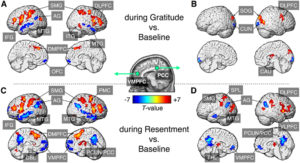Reduce Opioid Treated Low Back Pain with Meditation
By John M. de Castro, Ph.D.
“When your focus is on the pain, obviously that increases the pain. For people who meditate, their muscle tension and heart rate drops, their respiration slows and breaths gets deeper. All those things have impact on the pain.” – Jane Ehrman
Low Back Pain is the leading cause of disability worldwide and affects between 6% to 15% of the population. It is estimated, however, that 80% of the population will experience back pain sometime during their lives. There are varied treatments for low back pain including chiropractic care, acupuncture, biofeedback, physical therapy, cognitive behavioral therapy, massage, surgery, opiate pain killing drugs, steroid injections, and muscle relaxant drugs. These therapies are sometimes effective particularly for acute back pain. But, for chronic conditions the treatments are less effective and often require continuing treatment for years. Obviously, there is a need for safe and effective treatments for low back pain that are low cost and don’t have troublesome side effects.
Pain involves both physical and psychological issues. The stress, fear, and anxiety produced by pain tends to elicit responses that actually amplify the pain. So, reducing the emotional reactions to pain may be helpful in pain management. Mindfulness practices have been shown to improve emotion regulation producing more adaptive and less maladaptive responses to emotions. These include reducing pain catastrophizing. Indeed, mindfulness practices have been shown to be safe and beneficial in pain management in general and yoga and mindfulness has been shown to specifically improve back pain. Since opiates are frequently used to treat chronic low back pain, there is a need to study the combination of long-term opiate treatment and meditation practice.
In today’s Research News article “Mindfulness Meditation and Cognitive Behavioral Therapy Intervention Reduces Pain Severity and Sensitivity in Opioid-Treated Chronic Low Back Pain: Pilot Findings from a Randomized Controlled Trial.” See summary below or view the full text of the study at: https://www.ncbi.nlm.nih.gov/pmc/articles/PMC5063022/, Zgierska and colleagues recruited adult patients with chronic low back pain who had been treated for at least 3 months with relatively high doses (at least 30 mg/day) of opiates for pain. The patients were randomly assigned to receive meditation practice in combination with Cognitive Behavioral Therapy or to a wait-list control condition. The treatment consisted of 2-hour sessions once a week for 8 weeks of Cognitive Behavioral Therapy (CBT) for identifying and modifying unhealthy thought patterns concerning their pain (e.g. catastrophizing) and additionally mindfulness practices including breath meditation, loving-kindness meditation, body scan and mindful movement practices. Patients were also prescribed to practice meditation at home for at least 30 minutes, 6 days per week. Opiate medications were continued throughout testing. Patients were measured before and after treatment a half a year later for mindfulness, pain intensity, pain acceptance and coping, pain sensitivity to thermal stimuli, disability, opiate dose, and inflammatory biomarkers.
They found that the meditation group had a sustained decrease in unpleasantness and pain sensitivity to thermal stimuli (experimentally induced pain) and an 8% reduction in everyday pain intensity while the wait-list control group had an 8% increase in pain. The decrease in pain was greater for patients who consistently meditated at home compared to inconsistent meditators. In addition, the greater the increase in mindfulness in the meditation group, the greater the decrease in disability. No patients withdrew from the study suggesting that the treatment was acceptable and valued.
The intervention employed a combination of meditation with Cognitive Behavioral Therapy (CBT). So, it cannot be determined whether meditation, CBT, or their combination produced the benefits for the patients. Nevertheless, the results clearly demonstrated that the treatment was very effective in reducing pain and sensitivity to pain in patients with chronic low back pain who are under treatment with relatively high doses of opiates. It is quite striking that the effects were so large given the high doses of opiates in use and underscores the efficacy of the treatment. This suggests that perhaps the opioids had lost a degree of effectiveness with these patients and meditation training could replace the lost pain relief. So, meditation and CBT can effectively reduce pain even in patients taking opiates.
So, reduce opioid treated low back pain with meditation.
“Mindful mediation is an appealing option for treating your pain because it has an unusual benefit; it places you in a position of control. Unlike pain medications or surgical procedures, meditation is not done to you—but rather it is something you do for yourself.” – Stephanie Burke
CMCS – Center for Mindfulness and Contemplative Studies
This and other Contemplative Studies posts are also available on Google+ https://plus.google.com/106784388191201299496/posts and on Twitter @MindfulResearch
Study Summary
Zgierska, A. E., Burzinski, C. A., Cox, J., Kloke, J., Stegner, A., Cook, D. B., … Bačkonja, M. (2016). Mindfulness Meditation and Cognitive Behavioral Therapy Intervention Reduces Pain Severity and Sensitivity in Opioid-Treated Chronic Low Back Pain: Pilot Findings from a Randomized Controlled Trial. Pain Medicine: The Official Journal of the American Academy of Pain Medicine, 17(10), 1865–1881. http://doi.org/10.1093/pm/pnw006
Abstract
Objective. To assess benefits of mindfulness meditation and cognitive behavioral therapy (CBT)-based intervention for opioid-treated chronic low back pain (CLBP).
Design. 26-week parallel-arm pilot randomized controlled trial (Intervention and Usual Care versus Usual Care alone).
Setting. Outpatient.
Subjects. Adults with CLBP, prescribed ≥30 mg/day of morphine-equivalent dose (MED) for at least 3 months.
Methods. The intervention comprised eight weekly group sessions (meditation and CLBP-specific CBT components) and 30 minutes/day, 6 days/week of at-home practice. Outcome measures were collected at baseline, 8, and 26 weeks: primary-pain severity (Brief Pain Inventory) and function/disability (Oswestry Disability Index); secondary-pain acceptance, opioid dose, pain sensitivity to thermal stimuli, and serum pain-sensitive biomarkers (Interferon-γ; Tumor Necrosis Factor-α; Interleukins 1ß and 6; C-reactive Protein).
Results. Thirty-five (21 experimental, 14 control) participants were enrolled and completed the study. They were 51.8 ± 9.7 years old, 80% female, with severe CLBP-related disability (66.7 ± 11.4), moderate pain severity (5.8 ± 1.4), and taking 148.3 ± 129.2 mg/day of MED. Results of the intention-to-treat analysis showed that, compared with controls, the meditation-CBT group reduced pain severity ratings during the study (P = 0.045), with between-group difference in score change reaching 1 point at 26 weeks (95% Confidence Interval: 0.2,1.9; Cohen’s d = 0.86), and decreased pain sensitivity to thermal stimuli (P< 0.05), without adverse events. Exploratory analyses suggested a relationship between the extent of meditation practice and the magnitude of intervention benefits.
Conclusions. Meditation-CBT intervention reduced pain severity and sensitivity to experimental thermal pain stimuli in patients with opioid-treated CLBP.









